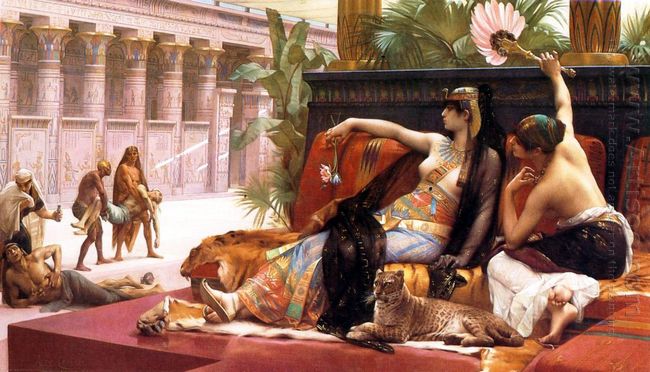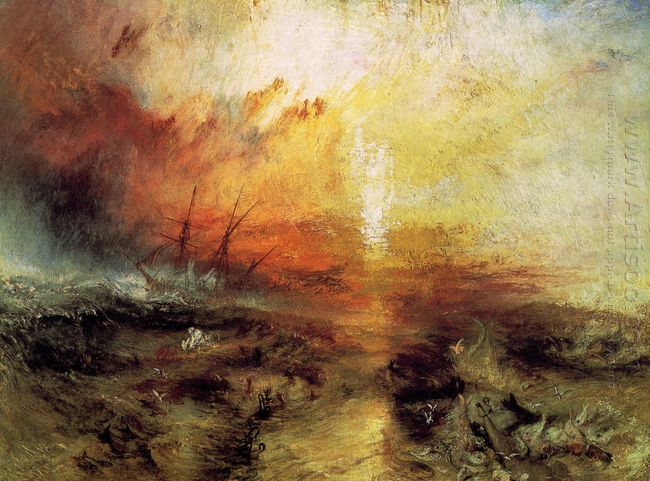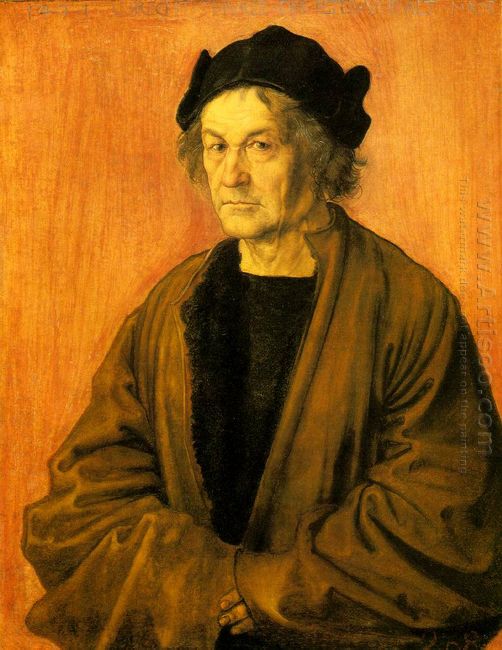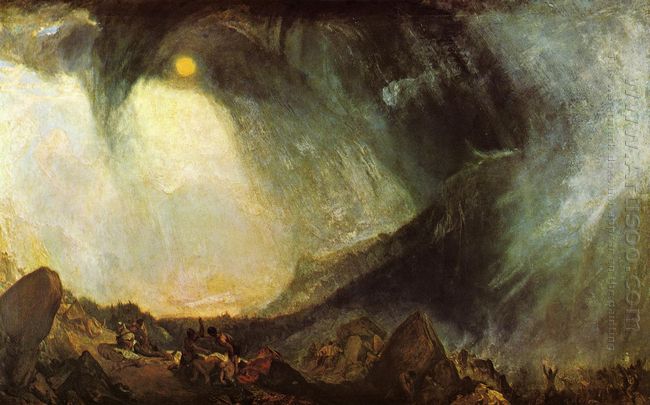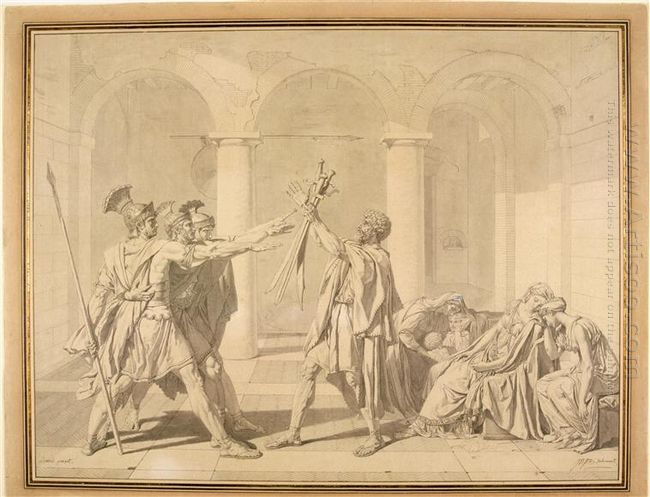Alexandre Cabanel, the imperial court painter of Napoleon III, was demonstrated his aesthetic philosophy successfully in Cleopatra Testing Poisons on Those Condemned to Death.
In the first half of the 19th century, an emerging knowledge "Egyptology" gradually inspired European’s interested in this country's history and culture, especially the life of Cleopatra who was an Egyptian queen. At that time, artists were competing for presenting Egyptian theme. This academicism painting was taken from Anthony's life that written by Plutarch, a Greek scholar and biographer. This book told the story that after Battle of Actium, Cleopatra felt the end is near when defeated by Octavian, so she decided to commit suicide. For this purpose, she ordered several slaves to try different poisons to find the poison with a minimum of pain.
In this painting, Cabanel accurately captured the figures’ facial expression: Cleopatra without a shred of charisma loss, she reclined on a bench with animal skins quiet observed the death of each slave, side with a leopard and a maid who rolled fan. The magnificence of this picture form a tension of confrontation with the fear of death, which may remind us Delacroix’ masterpiece The death of Saddanabarr, but different from this painting, Cleopatra Testing Poisons on Those Condemned to Death employed meticulous technique to create a surface calm. This painting exhibited at the Paris Salon gallery in 1887, and then sent Antwerp art museum as a gift in the same year. This painting was also held in Beziers Museum in France.

